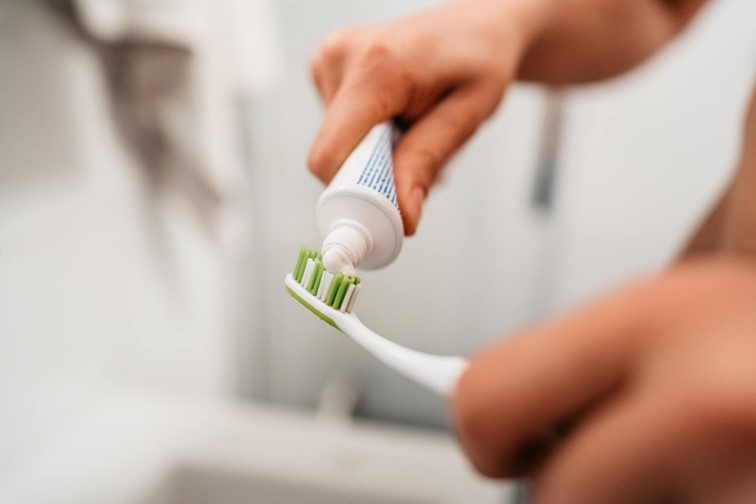How to Choose the Right Toothpaste for Your Needs

The toothpaste aisle can be surprisingly overwhelming. Rows of tubes promise cavity protection, whiter teeth, fresher breath, and relief from sensitivity, leaving you to wonder which one you should choose. Picking the right dental hygiene products doesn’t have to be confusing—it just takes a little knowledge about what your mouth actually needs. Here’s how to find the right fit for your situation.
What to Look for in a Toothpaste
Fluoride
Fluoride is one of the most important ingredients in toothpaste. It works by strengthening enamel, making teeth more resistant to decay and lowering the risk of cavities. Unless your dentist specifically advises otherwise, always choose a toothpaste that includes fluoride for daily protection.
Safe Abrasives and Foaming Agents
Mild abrasives like calcium carbonate or hydrated silica gently scrub your teeth to remove surface stains and plaque without harming enamel. Avoid products with overly gritty textures, as they can eventually wear down your teeth. If you experience irritation or frequent mouth sores, consider using toothpaste without sodium lauryl sulfate (SLS), a foaming agent known to trigger dryness and reactions in some people.
Flavor, Texture, and Sensory Preferences
The best toothpaste is one you’ll use consistently. This means the taste and texture matter. Mint is the most popular flavor, but options like cinnamon, bubblegum, and unflavored varieties are also available. Pick one that feels pleasant to brush with and makes your daily routine more enjoyable.
Match Your Toothpaste to Your Needs
Best Toothpaste for Sensitive Teeth
If you regularly wince when drinking hot coffee or eating ice cream, sensitivity toothpaste can help. Look for ingredients like potassium nitrate or stannous fluoride. These work by calming the nerves inside the teeth and shielding exposed roots. Sensitivity relief usually builds over several weeks of regular use, so be consistent.
Toothpaste for Whitening
Whitening toothpaste contains gentle abrasives or chemical agents like hydrogen peroxide to remove surface stains. While these make your teeth look brighter, they won’t change the natural shade or lift deep discoloration. As a result, whitening toothpaste is best used for maintenance. To achieve more dramatic results, in-office whitening is more effective.
Tartar Control Toothpaste
Tartar starts as plaque, a soft, sticky film of bacteria that forms on your teeth when you eat and drink. If you don’t remove plaque through regular brushing and flossing, it can harden into tartar, which only a professional dental cleaning can remove. If you’re prone to tartar buildup, consider a toothpaste with zinc citrate or pyrophosphates to make a noticeable difference between dentist visits.
All-in-One Formulas
For many people, a general fluoride toothpaste with anti-cavity protection is sufficient. If you have specific concerns like staining, sensitivity, or tartar buildup, a more targeted formula may be a better fit. Don’t want to pick and choose? Look for an all-in-one toothpaste that offers multiple benefits in a single tube.
Tips for Smarter Toothpaste Shopping
Look for the ADA Seal
A product with the American Dental Association (ADA) Seal of Acceptance meets high standards for safety and effectiveness. This seal confirms the toothpaste has undergone clinical testing, adheres to strict quality controls, and can do what it claims.
Read the Ingredient List
Look for active ingredients that support your specific needs, like potassium nitrate for sensitivity or hydrogen peroxide for stain removal. Toothpastes made with baking soda, coconut oil, or aloe are also available for those who prefer a natural approach.
Think About Product Integrity
Stick with trusted brands that list ingredients clearly and avoid over-the-top claims. A generic tube may save a few dollars upfront, but it won’t necessarily deliver the same results. On the other end of the spectrum, bright colors, fancy buzzwords, and decorative boxes don’t guarantee performance, either. Look past the shelf appeal and focus on what’s actually inside.
Toothpaste Dos and Don’ts
Toothpaste works best when paired with good technique:
- Brush twice a day for two full minutes using a soft-bristled toothbrush.
- Only use a pea-sized amount of toothpaste. Despite what you see in ads, using more won’t clean better—it just goes through the tube faster. For kids, use even less.
- Floss daily to clean between teeth and along the gum line, places toothbrush bristles can’t reach.
- Avoid rinsing with mouthwash immediately after brushing so fluoride can stay active on your teeth longer.
- Replace your toothbrush every three months or sooner if the bristles start to fray.
Partner with S&C Dental Beverly Hills
Finding the right toothpaste is an important decision that supports your overall health, and so is choosing the right dentist. At S&C Dental Beverly Hills, we provide comprehensive care that includes family dentistry, cosmetic treatments, and emergency services. Our experienced dentist, Dr. Kayla Lebo, takes the time to understand your needs and create a comfortable experience using the latest dental technology. We take pride in welcoming every patient with a smile and giving genuine attention to their needs. Contact us today for personalized help selecting the right toothpaste.
